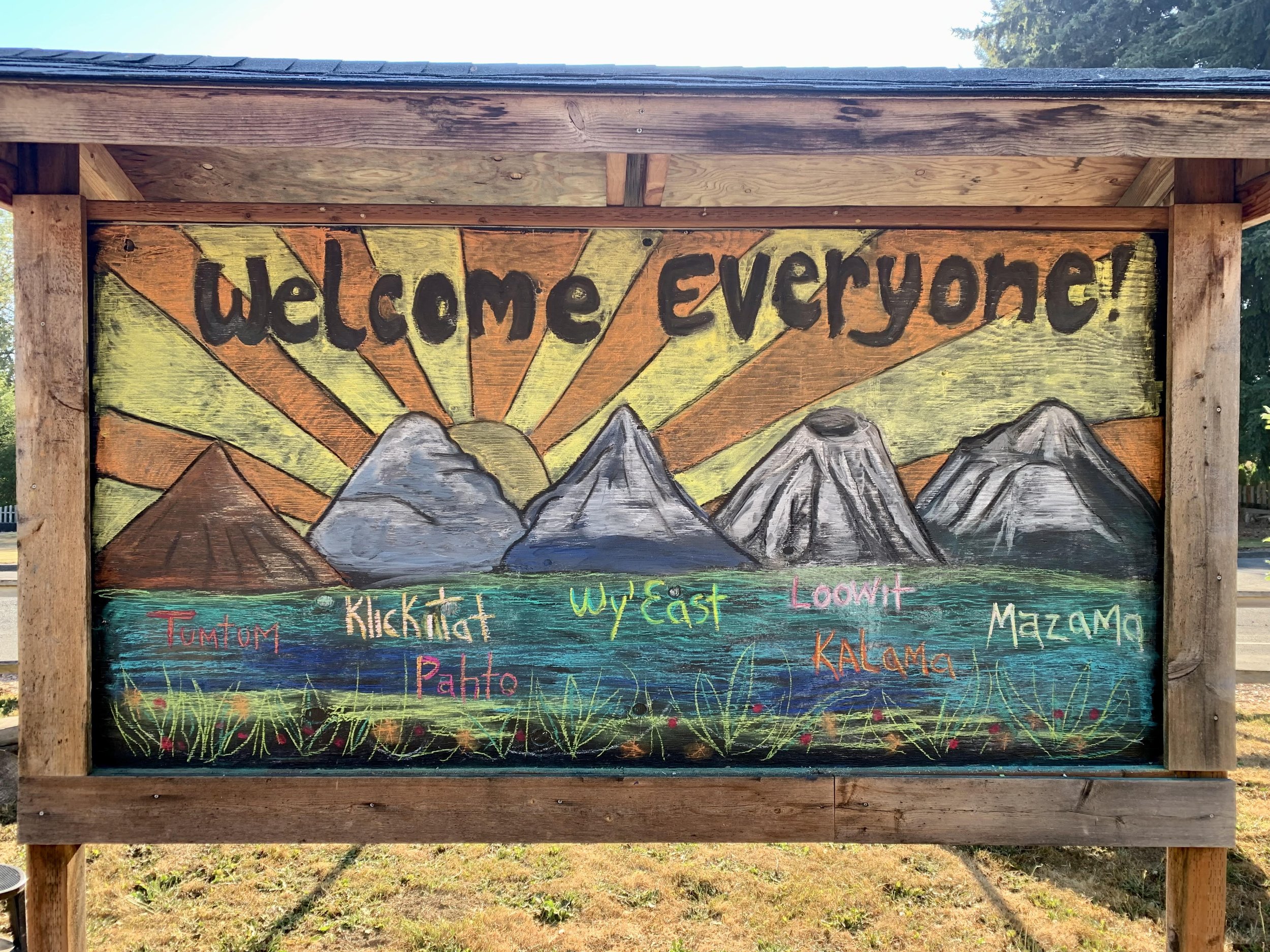Guide to Classroom Names
At Gardner, a sense of where we are is an important part of knowing who we are. The Gardner School of Arts & Sciences recognizes that we are located on the traditional lands of the Confederated Tribes of the Grand Ronde, the Confederate Tribes of the Siletz Indians and the lands of the Cowlitz people. We honor their history by sharing their stories in our classrooms and by being responsible stewards of the land. As a school community, we are still learning—and unlearning —about Indigenous peoples. Our goal is to take an expansive approach to history to be inclusive of a wider range of voices and experiences.
Classrooms share the names Pacific Northwest Native Americans gave to geological features in the area. The guide below gives a brief description of each name, sharing the stories passed down from time immemorial.
-
Late Pleistocene Volcanic Dome
Tumtum Mountain, the youngest quaternary volcano in the Washington Cascades, is a lava dome that rose along the Chelatchie Fault Zone about 70,000 years ago. Tumtum Mountain is one of north Clark County’s most noticeable geologic features. The mountain was a central point in the trade route Northwest tribes traveled when doing business with the Hudson’s Bay Company in the middle of the 19th century. According to legend, Tumtum means heart.
-
Crater Lake
The Klamath people of the Pacific Northwest tell a legend about a fight between two chiefs. “Llao” was the chief of the Below World and stood at Mount Mazama in Oregon. “Skell” was the chief of the Above World and stood at the summit of Mt. Shasta in Northern California. The two chiefs fought, throwing rocks and flames at each other. Llao was injured and fell into Mt. Mazama creating a huge hole. Over time that hole filled with water and is now known as Crater Lake.
-
Eruptive period of Mt. St. Helens
Mt. St. Helens is a young mountain. It is also one of the most active volcanoes in the Cascades. The volcano has been extensively studied and its eruptive history is known with great clarity. Scientists divide the history of Mt. St. Helens into four periods. The Kalama eruptive period began in the winter or early spring of 1479-1480. Many Native American legends describe vividly the volcanic activity of the Kalama period.
-
Mt. Adams (Yakama name)
Pahto means “standing high” in the language of the Yakama Nation. Mt. Adams is a sacred mountain for them, representing the strength of the nation through times of adversity. According to legend, the brothers of a great god came from the Great North, down the Columbia River, and settled in the gorge. To settle the brothers’ fight for land, their father shot an arrow to the south, and Wy’East travelled to his new home. He did the same to the north, and Pahto settled there.
-
Mt. St. Helens
Native cultures in the Pacific Northwest, such as the Salish and Klickitat Indians, called Mt. St. Helens “Loo-Wit Lat-kla” (fire mountain or smoking mountain). According to legend, Loowit (Mt. St. Helens) was once a beautiful maiden. When two sons of the Great Spirit fell in love with her, she could not choose between them. The two loves, “Wy’East” (Mt. Hood) and “Pahto” (Mt. Adams), fought over her, throwing fiery rocks at each other and causing earthquakes. The Great Spirit was furious: he smote all three and erected a mighty mountain peak where each fell. Because Loowit was a beautiful maiden, her mountain (Mt. St. Helens) was a beautiful, symmetrical cone of dazzling white.
-
Mt. Hood
Wy’East was one of the young warriors who fought with Pahto for Loowit’s love. When the Great Spirit destroyed Wy’East, he erected a strong, tall mountain that lifts its head in pride. That mountain is now known as Mt. Hood.
-
Mt. Adams
Klickitat is the mountain that the Great Spirit erected when he felled Pahto. While Mt. Hood stands tall and proud, Klickitat (Mt. Adams), wept to see the beautiful maiden Loowit wrapped in snow, so he bends his head as he gazes on Mt. St. Helens.

